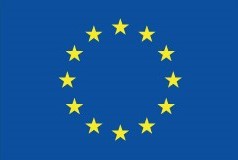- Home
- Knowledge library
- EuroDairy – The Dutch way of reducing antibiotics
EuroDairy – The Dutch way of reducing antibiotics
There are increasing concerns in society about the use of antibiotics and the development of antibiotics resistance in livestock farming. Resistance arises when bacteria become insensitive to antibiotics, posing problems for disease control. Therefore, responsible and transparent antibiotic use by dairy farmers is important.
The Dutch dairy sector has proactively and successfully reduced the use of antibiotics in dairy farming.
Between 2009 and 2016, usage decreased by 48%. The use of critical second and third-choice antibiotics has also been greatly reduced, and third-choice resources are now rarely used.
Since 2012, it is compulsory to register the use of antibiotics on every cattle farm in the national database MediRund.
This data, in combination with the number of cattle, allows us to calculate antibiotics use on a particular farm, which is expressed in terms of Defined Daily Dose Animal (DDDA) per animal per year (DD/DJ) at farm level. For example, a DD/DJ of 2 means that, on average, animals at the livestock farm concerned were treated with antibiotics for two days a year.
The farm levels are used for benchmarking and – if exceeding threshold values – indicate when corrective action is necessary. For the thresholds, a traffic-light colour coding stystem is implemented, with green (DD/DJ < 4), orange (4-6), indicative of a high use requiring attention, and red (>6) , requiring immediate action. If no action is undertaken and DD/DJ remains too high, milk will no longer be collected, as agreed in the milk-purchasing conditions of the milk buyers/dairies.
EuroDairy created this technical leaflet with novel information on this specific topic and an inspiring example from dairy farmer Van Dee (Yzendoorn, Holland).
This project has received funding from the European Union`s Horizon 2020 research and innovation programme under grant agreement No 696364.
 Government logo
Government logo
Sectors:


